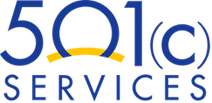
As a nonprofit leader, you’re probably well-acquainted with the many challenges nonprofits face with staffing and retention. Nonprofits, more than any other type of organization, depend on the dedication and investment of their entire team, not just in earning a wage but in the mission of the organization. This dynamic can create some amazing outcomes and help move your organization’s mission forward, but it can also lead to burnout, a constrained hiring pool, and the potential for overwork to compound with other issues and lead to lower job performance. Avoiding these problems while also maintaining a sustainable budget can feel difficult, if not impossible, for many nonprofit organizations.
Nonprofits deal with a 21% rate of staff churn, which is higher than any other type of organization. Meeting this challenge head on requires you to take advantage of any means you can find to identify, hire, and retain dedicated staff members. One of the most popular ways that organizations recruit outside of job boards or paid recruiter services is a referral program. This sort of program allows your team to tap into their individual networks and, in effect, do the recruiting for you. These programs often prove to be more effective not just in finding candidates but in finding ones who will stick around, making them highly attractive to nonprofits. If you’re thinking about starting a referral program or you want to reassess your recruiting process more generally, here are some key things you may want to consider:
Referral program details and statistics
It isn’t hard to find reasons why referral programs remain such an enduring part of recruitment. Statistics show that, in addition to providing an avenue for recruits you might not have otherwise been able to connect with, referred employees tend to stay with organizations longer, move through onboarding and training faster, and can, in some cases, be more productive. However, success often hinges on how well the program is implemented and communicated, as well as how you choose to explain and promote it to your team.
Some organizations do not invest fully in the program and then give up once it doesn’t pan out, or they balk at the idea of doling out bonuses for referrals. The logic is understandable — wouldn’t it make more sense to pay a professional recruiter? However, the results and statistics show that the potential for less time invested in recruiting, access to more performant candidates, and the potential for much better staff retention make it worth taking seriously. Even if you already have a program in the works, it may be worth it to reexamine your process and iterate to make it more effective.
Creating a referral program at your nonprofit organization
Creating one of these programs can be a fairly significant task, but it could provide major advantages if you do it right. This kind of program invites your team to contribute to recruiting efforts, often in exchange for a bonus or other recognition or other benefit, so you’ll probably need to ensure all of the steps of the plan are clear and well-articulated, and that managers can help reinforce awareness of the program through regular reminders. The key elements of the program might differ from organization to organization, but here are some important parts you may wish to include:
- A clear and well-defined process that your employees can follow for a referral. This is often a major sticking point, as some organizations will ask an employee and the person they are referring to fill out separate forms, one an application and the other a referral. Whether these two things are ever “joined” in the system can sometimes be unclear, and this can become an issue at larger organizations with lots of applicants.
- A good incentive for your employees to participate. The most common incentive is a payment, sometimes in the thousands of dollars. While this may seem like a large amount, when weighed against the potential savings of skipping recruiter fees, having a shorter onboard process, and hiring someone who sticks around long-term, this actually represents a possible cost savings for you. If you don’t have the financial resources for this kind of payout, you could instead offer additional vacation days, a package of custom swag, and some recognition internally, such as an organization-wide thank you email or shoutout during meetings.
- A long-term promotional program can also be important, as this program will likely not be top of mind for your employees. Your managers can help by reminding people of the program benefits, and it can be helpful to bring it up every time you begin another round of recruiting. Even employees who aren’t interested at first may have a friend who starts looking for work later down the line, so having a long-term promotional strategy can ensure that you maximize the value of the program. It can be more effective if you include mentions of benefits in these promotions — people might feel more desire to participate if they learn that the program is working as intended and their coworkers are getting paid for referrals.
Risk factors
While these programs offer major benefits, they can also represent some potential risks. Having a clearly defined set of rules and expectations is very important, as it helps you avoid conflicts of interest, morale issues, and other common problems. Sometimes, people hoping for a payment may feel slighted or upset if you do not hire their referral, or sometimes people may refer a spouse, family member, or friend, tying the recruitment process to their personal life. You can develop rules which make it clear that referrals do not guarantee a payment or employment, and that you cannot abide by personal relationships must not influence your recruitment or retention policies.
ABOUT US
For more than 40 years, 501(c) Services has been a leader in offering solutions for unemployment costs, claims management, and HR support to nonprofit organizations. Two of our most popular programs are the 501(c) Agencies Trust and 501(c) HR Services. We understand the importance of compliance and accuracy and are committed to providing our clients with customized plans that fit their needs.
Contact us today to see if your organization could benefit from our services.
Are you already working with us and need assistance with an HR or unemployment issue? Contact us here.
The information contained in this article is not a substitute for legal advice or counsel and has been pulled from multiple sources.
(This_is_Engineering from Pixabay)




